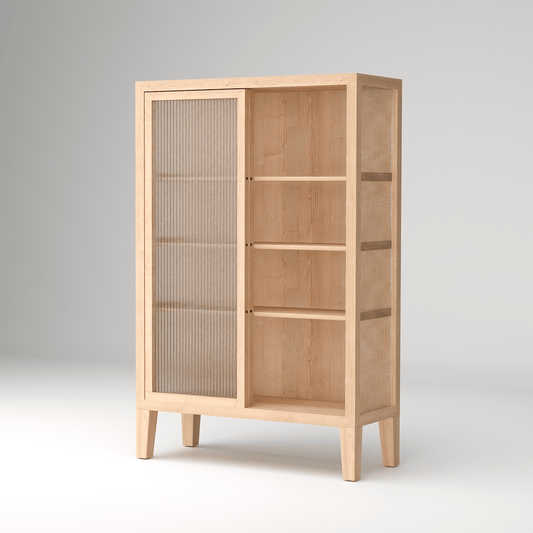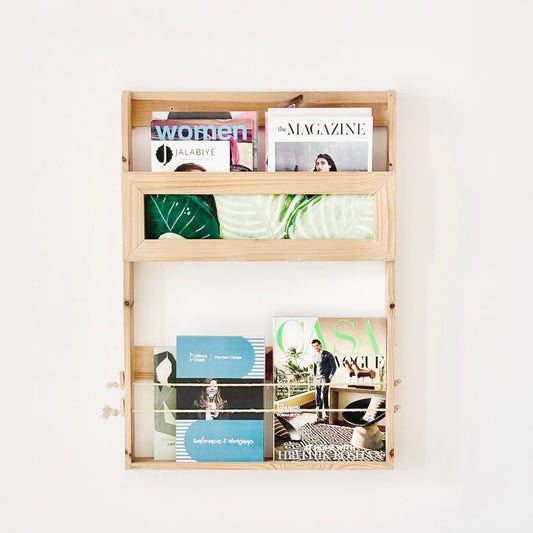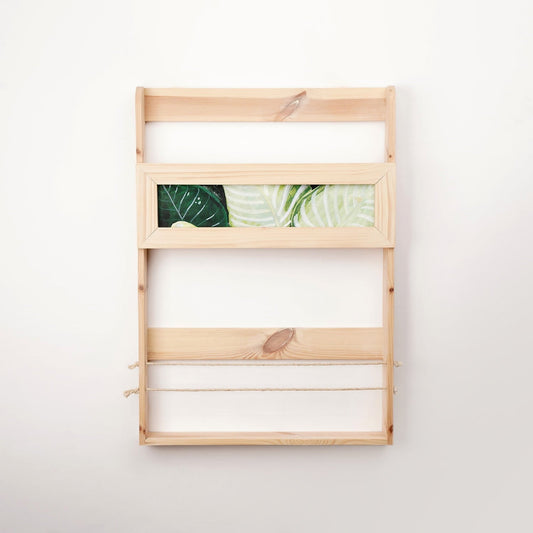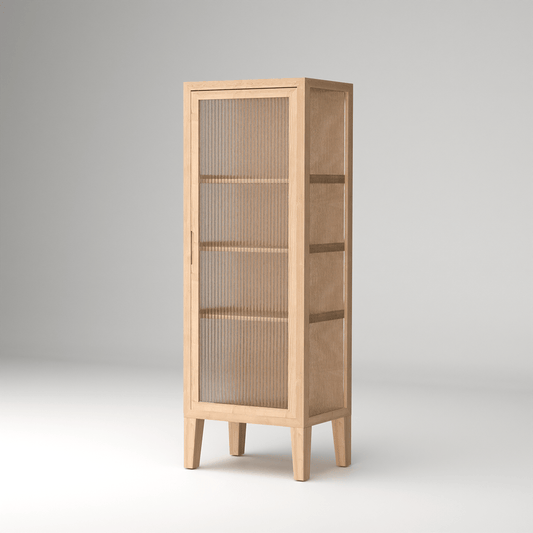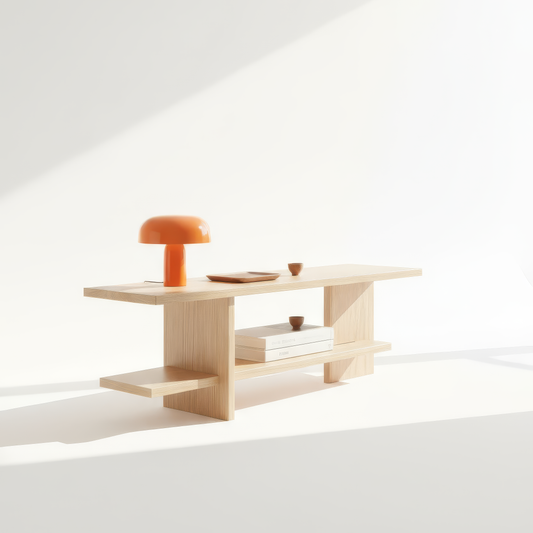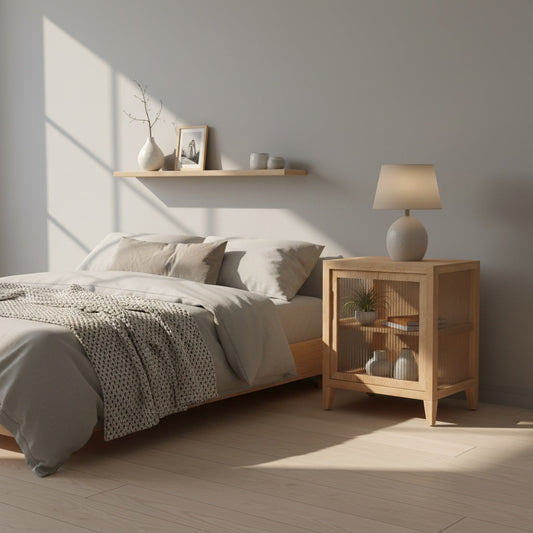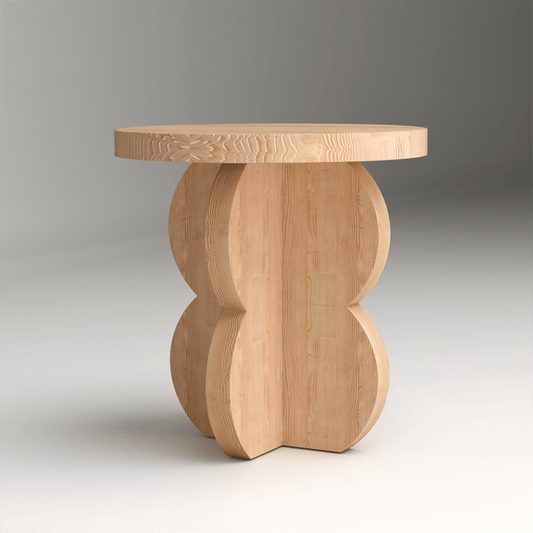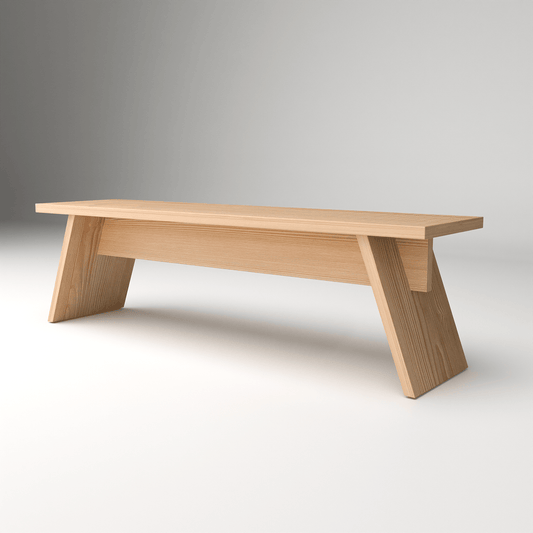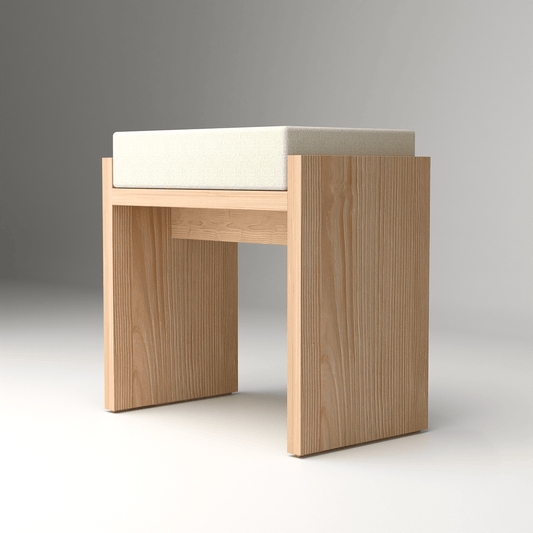The Nordic design landscape is experiencing its most significant transformation in decades as we move through 2025. What began as a movement defined by stark minimalism and functional simplicity has evolved into something far more sophisticated—a design philosophy that embraces human comfort, environmental responsibility, and emotional well-being while maintaining the clean aesthetic principles that made Scandinavian design globally influential.
This evolution represents more than aesthetic changes; it reflects a fundamental shift in how we understand the relationship between our living spaces and our quality of life. At A Good Life, we've been at the forefront of this transformation, creating handcrafted pine wood furniture that embodies these new Nordic principles while honoring the movement's timeless foundations.
The Great Nordic Awakening
Understanding the current evolution requires appreciating the journey Nordic design has taken from its mid-century origins to today's more nuanced approach.
Historical Context and Modern Transformation
The original Nordic design movement emerged from post-war Scandinavia with democratic ideals—beautiful, functional objects that everyone could afford and enjoy. However, by the early 2000s, this philosophy had been distilled into something almost clinical in its pursuit of minimalism.
The 2025 evolution represents a return to the human-centered values that originally defined Nordic design, enhanced by contemporary understanding of wellness, sustainability, and the role of craftsmanship in creating meaningful spaces.
Key Evolutionary Markers
Early 2000s: Peak minimalism with stark aesthetics and sparse furnishing 2010s: Introduction of hygge and cozy elements 2020s: Sustainability becomes paramount 2025: Integration of comfort, wellness, and artisanal craftsmanship
Material Revolution: The New Nordic Palette
One of the most significant changes in 2025 Nordic design is the expanded material palette that prioritizes sustainability, tactile appeal, and emotional warmth.
Sustainable Material Leadership
Reclaimed Pine Wood: Leading the sustainable revolution, reclaimed pine offers unique character marks and environmental benefits while providing the warmth essential to modern Nordic spaces.
Natural Stone: Local stones and ceramics that connect spaces to their geographic origins while providing textural contrast to wood elements.
Organic Textiles: Linen, wool, and cotton in their natural states, often left undyed to showcase inherent beauty.
Recycled Metals: Brass, copper, and steel elements that add industrial touches while supporting circular economy principles.
Our Solid Pine Wabi-Sabi Step Side Table exemplifies this material evolution, celebrating the natural imperfections and character marks that make each piece unique. This approach reflects the 2025 Nordic appreciation for authenticity over perfection, creating furniture that tells stories and develops character over time.
Color Evolution: Beyond White Walls
The 2025 Nordic color palette has expanded dramatically from the stark whites that once defined the movement, embracing colors that support psychological well-being and emotional comfort.
The New Nordic Color Framework
Warm Neutrals: Soft creams, gentle beiges, and warm grays that provide nurturing foundations without the harshness of pure white.
Earth Tones: Muted terracotta, sage green, and dusty rose that connect interiors to natural landscapes while maintaining Nordic restraint.
Natural Wood Spectrum: From light pine to rich walnut, showcasing wood in its natural state rather than painted or heavily processed finishes.
Accent Colors: Deeper blues, forest greens, and burgundies used sparingly to create focal points and seasonal interest.
Color Application Strategies
Modern Nordic design uses color strategically to:
-
Define functional zones within open spaces
-
Support circadian rhythms through warm and cool balance
-
Create emotional responses that support well-being
-
Reflect seasonal changes and natural cycles
-
Maintain visual harmony while adding personality
Furniture Design: Function Meets Emotion
2025 Nordic furniture design represents a sophisticated balance between the movement's functional heritage and contemporary understanding of how design affects human well-being.
Design Principles for Modern Nordic Furniture
Ergonomic Comfort: Pieces designed from the ground up to support the human body and promote good posture.
Emotional Resonance: Furniture that creates psychological comfort through proportions, materials, and craftsmanship details.
Multi-Sensory Appeal: Designs that engage touch, sight, and even subtle acoustic properties.
Sustainable Construction: Building methods that ensure longevity while minimizing environmental impact.
Adaptable Functionality: Pieces that can serve multiple purposes and adapt to changing needs.
For storage solutions that embody these principles, consider our Solid Wood Multipurpose Shelf with Drawer. This piece demonstrates how 2025 Nordic design achieves maximum functionality while maintaining visual simplicity, offering both open display space and concealed storage in a form that celebrates the natural beauty of pine wood.
Lighting Revolution: Beyond Functionality
Lighting design in 2025 Nordic interiors has evolved from purely functional considerations to become a primary tool for creating emotional atmospheres and supporting human well-being.
Modern Nordic Lighting Principles
Circadian Support: Lighting systems that adjust throughout the day to support natural sleep-wake cycles.
Layered Illumination: Multiple light sources that create depth and allow for mood adjustment throughout different activities.
Warm Color Temperatures: 2700K-3000K lighting that promotes relaxation and creates welcoming atmospheres.
Sculptural Elements: Light fixtures that serve as art pieces while providing functional illumination.
Natural Light Optimization: Strategic design that maximizes and celebrates available daylight.
Spatial Planning: Wellness-Centered Design
The way Nordic designers approach spatial planning has evolved to prioritize human wellness and emotional comfort alongside functional efficiency.
Wellness-Focused Spatial Principles
Biophilic Integration: Systematic incorporation of natural elements and patterns that support human connection to nature.
Flow and Movement: Spatial arrangements that encourage natural movement and reduce stress.
Flexibility: Spaces designed to adapt to different activities and social situations throughout the day.
Privacy Balance: Careful consideration of when people need connection and when they need solitude.
Air Quality: Attention to ventilation and indoor air quality as fundamental design considerations.
Technology Integration: Invisible Enhancement
Modern Nordic design thoughtfully incorporates technology in ways that enhance daily life without disrupting the aesthetic or philosophical principles of the movement.
Smart Nordic Integration
Hidden Infrastructure: Cable management and charging solutions that maintain clean aesthetics.
Automated Comfort: Climate and lighting systems that adjust automatically to support well-being.
Digital Wellness: Design elements that encourage healthy relationships with technology.
Sustainable Tech: Energy-efficient systems that align with environmental values.
Human-Centered Automation: Technology that serves human needs rather than dominating the experience.
Artisanal Craftsmanship Renaissance
One of the most significant developments in 2025 Nordic design is the renewed appreciation for handcrafted elements and traditional skills.
The New Craft Movement
Visible Craftsmanship: Celebrating rather than hiding the marks of human hands in furniture construction.
Local Production: Supporting regional craftspeople and traditional skills.
Material Honesty: Showcasing the natural properties and aging characteristics of materials.
Unique Character: Embracing variations and imperfections that make each piece individual.
Story-Telling: Furniture and objects that connect users to the makers and processes behind them.
Our Wabi-Sabi Wooden Stool with Cushion embodies this artisanal renaissance, combining traditional woodworking techniques with contemporary comfort needs. The visible wood grain and natural imperfections celebrate the material's authentic character while the integrated cushion provides modern comfort.
Sustainability as Design Driver
Environmental responsibility has moved from optional consideration to fundamental design driver in 2025 Nordic interiors.
Sustainable Design Integration
Circular Economy: Designing for disassembly, repair, and eventual recycling or composting.
Local Sourcing: Prioritizing materials and production that support local economies and reduce transportation impact.
Longevity Focus: Creating pieces designed to last generations rather than follow trends.
Waste Reduction: Production methods that minimize waste and maximize material utilization.
Carbon Consideration: Factoring carbon footprint into material and production decisions.
Wellness Integration: Design for Human Flourishing
Perhaps the most significant evolution in Nordic design is the systematic integration of wellness principles into every design decision.
Wellness-Centered Design Elements
Air Quality: Materials and finishes that support healthy indoor environments.
Acoustic Comfort: Design solutions that manage sound and create peaceful environments.
Ergonomic Support: Furniture and spatial arrangements that support physical health.
Psychological Comfort: Colors, textures, and proportions that promote mental well-being.
Social Connection: Spaces designed to facilitate meaningful human interaction.
Regional Variations: Global Nordic Influence
As Nordic design has spread globally, it has evolved to incorporate regional materials, climate considerations, and cultural preferences while maintaining core principles.
Adaptive Nordic Principles
Climate Responsiveness: Adapting Nordic principles to different climates and seasonal patterns.
Cultural Integration: Incorporating local traditions and preferences within Nordic frameworks.
Material Availability: Using locally available materials that align with Nordic sustainability principles.
Lifestyle Adaptation: Modifying spatial arrangements to support different cultural approaches to home life.
The Future of Nordic Design
Looking beyond 2025, several trends suggest continued evolution of Nordic design principles.
Emerging Directions
Regenerative Design: Moving beyond sustainability to design that actively improves environmental conditions.
Community-Centered Spaces: Design that facilitates both digital and physical community connections.
Adaptive Environments: Spaces that automatically adjust to support human needs throughout the day and seasons.
Global Collaboration: Increased exchange of ideas and techniques between Nordic designers and craftspeople worldwide.
Wellness Technology: Integration of health-monitoring and supporting technologies within Nordic aesthetic principles.
Implementation Strategies for Modern Nordic Design
Successfully incorporating these evolved Nordic principles requires strategic thinking about priorities, budget, and lifestyle needs.
Getting Started with Modern Nordic
Assessment Phase: Evaluate current spaces against wellness, sustainability, and comfort criteria.
Priority Setting: Identify which elements will have the greatest impact on daily well-being.
Quality Investment: Choose pieces that embody multiple Nordic principles and will provide long-term satisfaction.
Gradual Integration: Implement changes over time to allow for adjustment and refinement.
Professional Guidance: Consider working with designers who understand evolved Nordic principles.
Measuring Success in Modern Nordic Design
Success in 2025 Nordic design goes beyond aesthetic appeal to include measurable improvements in quality of life.
Success Indicators
Wellness Metrics: Improved sleep, reduced stress, increased energy, and better overall health.
Environmental Impact: Reduced resource consumption and waste production.
Social Benefits: Increased enjoyment of home entertaining and family time.
Economic Value: Long-term cost savings through durable, repairable furniture choices.
Personal Satisfaction: Genuine pleasure and pride in your living environment.
The evolution of Nordic design in 2025 represents a maturation of the movement that maintains its core values while embracing a more sophisticated understanding of how design impacts human well-being. By integrating comfort, sustainability, craftsmanship, and wellness into every design decision, modern Nordic interiors offer a blueprint for creating spaces that truly support the good life.
This evolution acknowledges that our homes should serve as more than aesthetic statements—they should be active contributors to our health, happiness, and connection to both nature and community. As Nordic design continues to evolve, these human-centered principles will remain its most important characteristics, ensuring that the movement continues to offer relevant solutions for contemporary living challenges.


